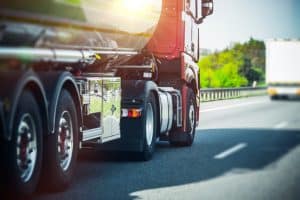The Future of Trucking in Chicago and across the United States
 Chicago is one of the nation’s leading transportation hubs. Trucks traveling cross-country, regionally, and locally – routinely pass through Chicago. The logistics of which roads and highways trucks will use is not going to change unless there are major infrastructure changes. What is changing, however, is who is driving the trucks and what types of trucks are being driven.
Chicago is one of the nation’s leading transportation hubs. Trucks traveling cross-country, regionally, and locally – routinely pass through Chicago. The logistics of which roads and highways trucks will use is not going to change unless there are major infrastructure changes. What is changing, however, is who is driving the trucks and what types of trucks are being driven.
In a recent report on Medium.org, Uber Advanced Technologies Group discussed some of the new ideas that are causing excitement and concern in the trucking industry.
Self-driving trucks
Trucks that drive themselves through the use of sophisticated technology are a worry for truck drivers. Current drivers worry that autonomous trucks will replace drivers and that millions of jobs will be lost Uber states that it is investing in self-driving trucks and a new app, called Uber Freight, that matches truck carries and drivers. Uber claims that a mixed-fleet approach (a mix of self-driving and human driver-operated trucks) is a model that could actually increase shipping growth, create more trucking jobs, and lead to better prices for consumers.
Uber cites the current statistics (backed by the American Transportation Research Institute) in support of the need for these new technologies:
- The average age of a trucker has increased from 42 to 49.
- Over half of all truckers are over 45 years old while only a quarter are under 35 years-of-age.
- Driving is a grueling job which discourages new drivers. Many drivers are away from home nearly 200 days and nights each year.
- Drivers need a Commercial Driver’s License (CDL) to operate large semis and tractor trailers.
- The demand for freight is increasing. The American Trucking Associations estimate that even though 400,000 drivers are expected to retire soon, nearly 900,000 new drivers will be needed to meet future freight demands.
Uber suggests the creation of transfer hubs and mixed fleets. The hubs are exchanges where the driver-less trucks stop after making long hauls. At the transfer hub, a human driver will then pick up the goods and transport the products to local warehouses and factories. In this way, human drivers can handle the crowded streets, the physical loading and unloading, and the navigation of the loading and unloading sites. Human drivers will be able to stay closer to home while the self-driving trucks handle the cross-country and longer hauls.
Uber claims that it analyzed historical date, U.S. Bureau of Labor Statistics data, and numerous deployment scenarios to arrive at its transfer hub and mixed fleet conclusion. It also asserts that a big advantage of self-driving trucks is that they can operate around the clock. Federal law and common sense requires that human drivers get a good night’s rest and drive 70 hours or less in any week.
Uber’s analysis showed that using both self-driving and human driven trucks would actually create 766,000 trucking jobs by 2028 because efficiency would increase while the cost of shipping would decrease. Lower costs mean increased consumer demand, which means the need for more trucks of both types. Uber also claims that new jobs will be created such as jobs maintaining both types of trucks, jobs managing the hubs, and jobs created due to a stronger economy.
Both self-driving and human driving trucks will still cause fatalities and serious injuries. The main change our Chicago truck accident lawyers will need to address is showing how the accident happened and who is responsible. In addition to negligence claims, our Gainsberg Injury and Accident Lawyers attorneys may be forced to bring more product liability claims because the technology that drives the trucks is defective. If you or someone you love was in any type of truck accident, please call us for experienced help. You can reach us at 312-600-9585 or set up an appointment through our contact form.

Attorney Neal Gainsberg has spent the last 20+ years fighting to protect the rights of the injured in Chicago and throughout Illinois. For dedicated legal help with a personal injury, car accident, or wrongful death matter, contact Gainsberg Injury and Accident Lawyers in Chicago for a free consultation.
